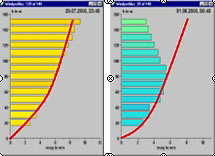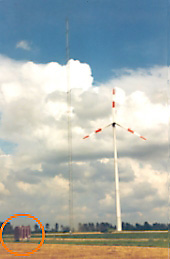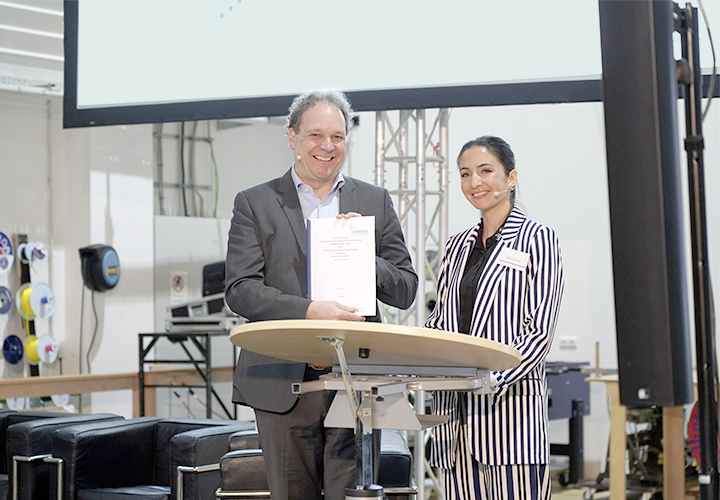Remote Sensing: LIDAR/SODAR
Site Evaluation
In addition to the knowledge of the long-time and indexed wind potential of a wind energy system’s site, the progression of the wind or elevation profile is of fundamental importance. The wind profile should directly help in the decision making, to determine the hub height of the future wind energy system (WES) or to allow the evaluation of the emerging strain of the WES components in case of wind shear.
Benefit to the Customer
 Use of the SODAR system deployed by wtg allows the measurement of for example drops in the vertical wind profile that enable conclusions regarding the future optimum hub height of the WES. In practice this means that sometimes smaller hub heights can deliver the same or greater energy yields as higher hub heights. This can be linked to a reduction of investment costs and a more secure planning basis. In addition to its short installation time, the SODAR system stands out because it does not need any construction permit although it can be used at a measuring height of up to 200 m (150 m recommended). This is due on the one hand to the low installation height of only 3 m – compared to the wind measuring towers – and on the other hand to the mobility of the system, which additionally allows the user to measure several different sites of a wind park in a very short time.
Use of the SODAR system deployed by wtg allows the measurement of for example drops in the vertical wind profile that enable conclusions regarding the future optimum hub height of the WES. In practice this means that sometimes smaller hub heights can deliver the same or greater energy yields as higher hub heights. This can be linked to a reduction of investment costs and a more secure planning basis. In addition to its short installation time, the SODAR system stands out because it does not need any construction permit although it can be used at a measuring height of up to 200 m (150 m recommended). This is due on the one hand to the low installation height of only 3 m – compared to the wind measuring towers – and on the other hand to the mobility of the system, which additionally allows the user to measure several different sites of a wind park in a very short time.
The SODAR system enables the non-contact measurement of wind conditions from the ground. The expensive installation of wind measuring towers (WMT) with the current standard sensors – calibrated anemometers and vanes – becomes superfluous. The height of WMT is bound to be limited because of economic and technical reasons. Hub heights of 100 m are no longer rare with modern WES.
Implementation
 The SODAR system is transported to the measuring site by car, in difficult terrain a SUV or a tractor can be used. The SODAR is then oriented in such a way that the acoustic transmission signal is not reflected by obstacles such as forests, pylons or wind measuring towers (echo). The continually recorded 10-minute data are buffered in the ASP (acoustic sound processor) and retrieved on a notebook. Then they can be transferred via a GSM network or by telephone. The measurements should span at least 1 month (3 months recommended), in order to take all wind directions into consideration. For the set measuring heights (20 – 200 m) the wind statistics of the wind energy, wind speed, wind direction, background noise level and other signals relevant to the evaluation are saved in 5 or 10 m intervals.
The SODAR system is transported to the measuring site by car, in difficult terrain a SUV or a tractor can be used. The SODAR is then oriented in such a way that the acoustic transmission signal is not reflected by obstacles such as forests, pylons or wind measuring towers (echo). The continually recorded 10-minute data are buffered in the ASP (acoustic sound processor) and retrieved on a notebook. Then they can be transferred via a GSM network or by telephone. The measurements should span at least 1 month (3 months recommended), in order to take all wind directions into consideration. For the set measuring heights (20 – 200 m) the wind statistics of the wind energy, wind speed, wind direction, background noise level and other signals relevant to the evaluation are saved in 5 or 10 m intervals.
Other Applications
The SODAR system has been successfully used worldwide for many years by wtg for the following applications:
- Wind profile measurements,
- Wind potential measurements with or without wind measuring tower,
- Measurement of turbulence intensity,
- Performance curve measurements.




